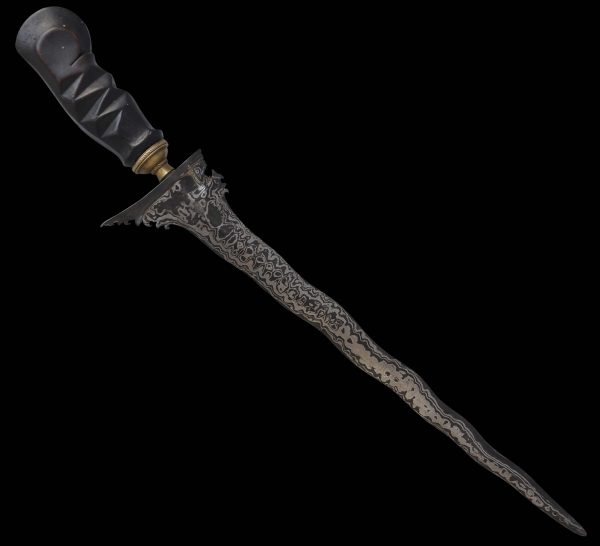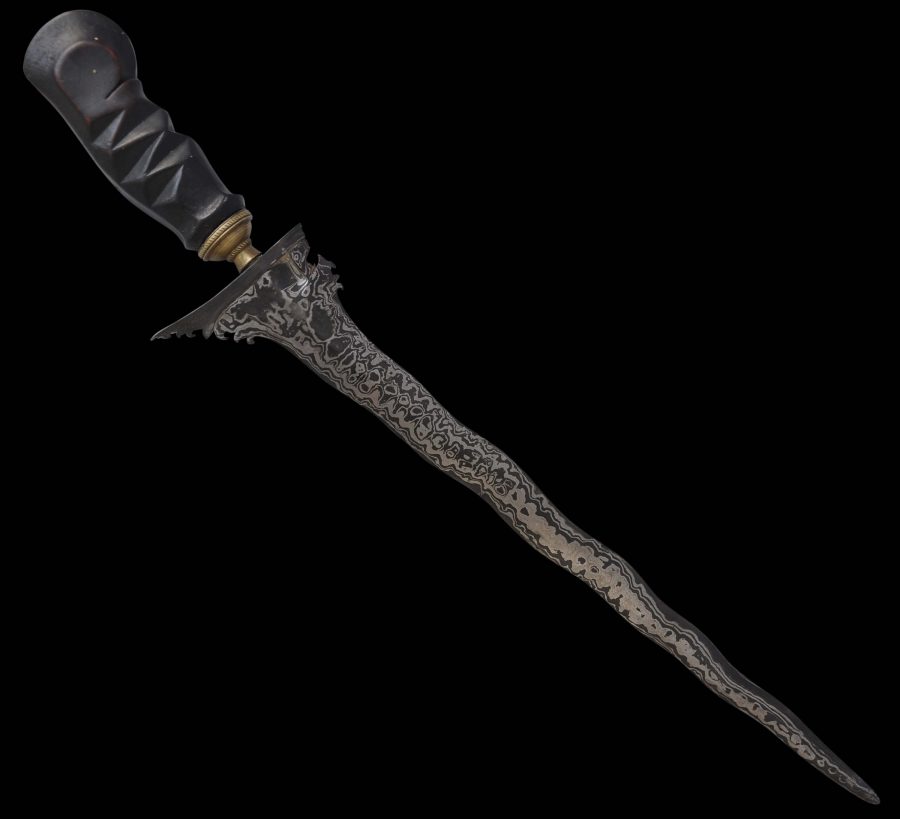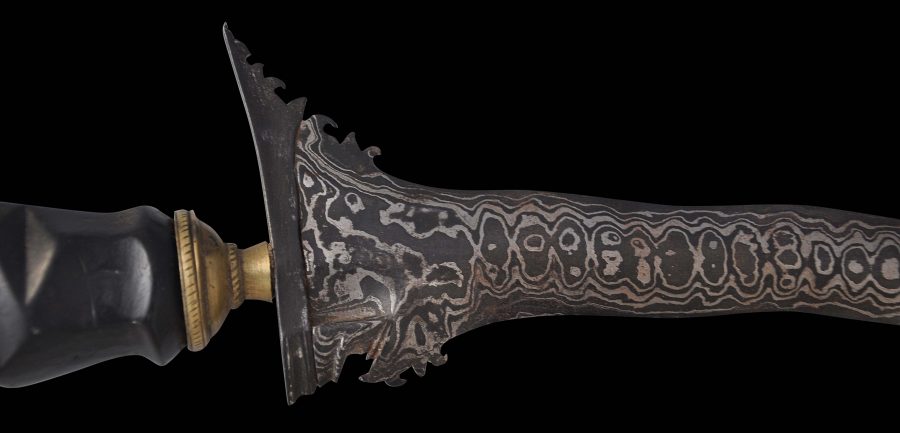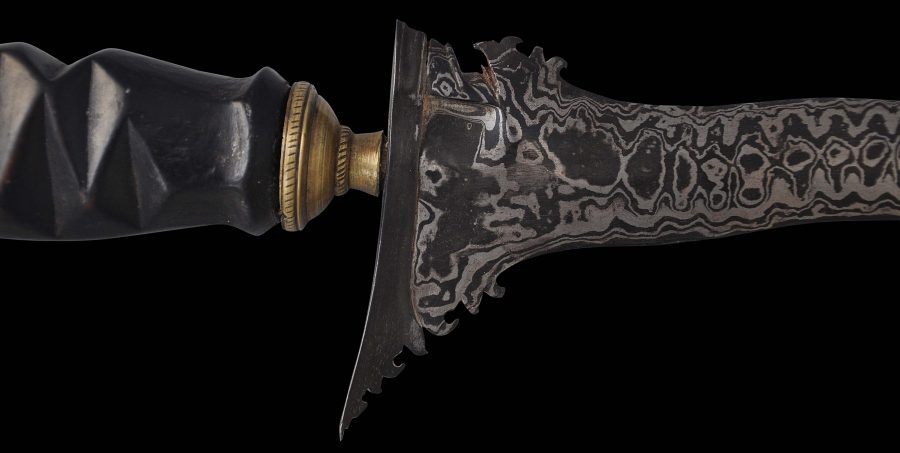This kris, comprising a blade, a hilt and no scabbard, is impressive for the quality of the damascening of the blade.
The blade has a fine and distinctive ‘seranta‘ pamor pattern. It has gentle waves. The top of the blade has been shaped with an elephant head motif.
The ring stem is of incised brass.
The hilt is of Areng wood, which resembles ebony, and has been carved in the Cekak Redut style. Hilts of this type were worn by Balinese soldiers. The perceived tranquillity of Bali today conceals a turbulent past. A small island home to eight small kingdoms of shifting alliances but with the Dewa Agung, the raja of Klungkung, as the spiritual titular overlord, there was a historic need for soldiers and armies. In the 1840s with the principality of Buleleng under threat by the Dutch, the Dewa Agung was able to assemble a composite army from the various principalities to go to Buleleng’s aid – three thousand soldiers came from Gianyar, three thousand from Mengwi, five thousand from Karangasem as well as two thousand from Klungkung itself (Wiener, 1995, p. 174). Pamor iron is achieved by hammering and folding sheets of molten iron and nicklel until the resulting blade has a fine, watered appearance. Such pamor designs imbue the kris with magical powers. Such krises were produced by kris-smiths (empus) – a role that combined blacksmithing with Balinese mysticism.
The blade is in excellent condition; there are no signs of rust, past or present.
References
Ghiringhelli, V., Kris Hilts: Masterpieces of South-East Asian Art, 5 Continents, 2011.
Groneman, I., The Javanese Kris, C. Zwartenkot Art Books, 2009.
Wiener, M.J., Visible and Invisible Realms: Power, Magic and Colonial Conquest in Bali, Chicago University Press, 1995.






